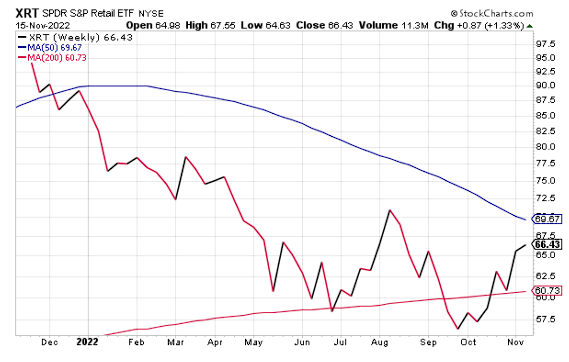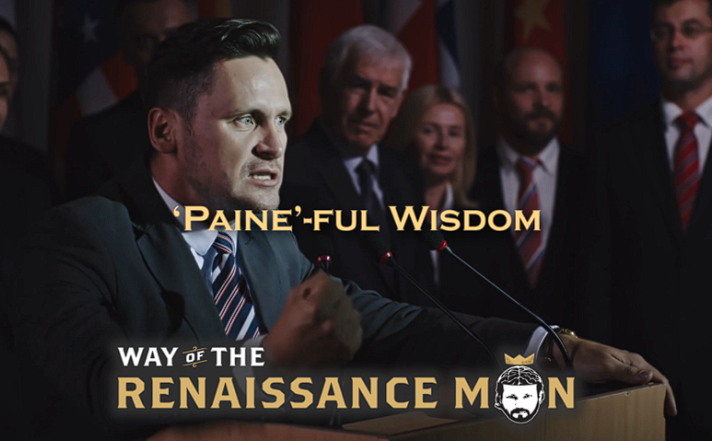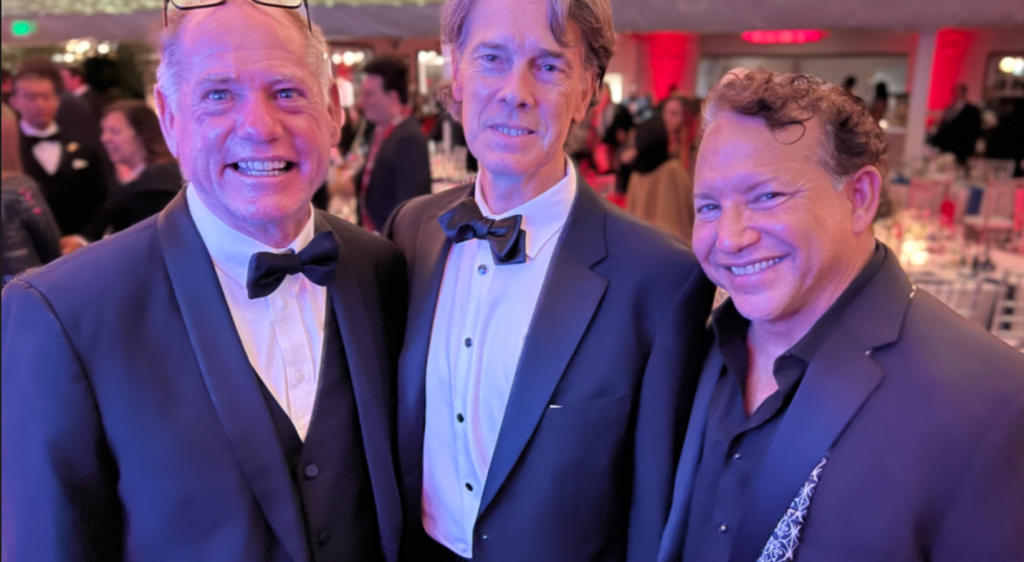Revisiting Bear Market Realities
In May of this year, when it was clear the market had descended into bear territory, I wrote to you about what I called, “The Cold Hard Truth About Bear Markets.”
In that issue, I told you how long bear markets typically last, how much damage they do and how these market cycles really work. Today, I want to revisit this research, because the numbers here are eerily similar to where we are at right now in this current bear market.
The following bear market data comes to us from research conducted by Hartford Funds.
- Stocks lose 36% on average in a bear market. By contrast, stocks gain 114% on average during a bull market.
- Bear markets are normal. There have been 26 bear markets in the S&P 500 Index since 1928. However, there also have been 27 bull markets, and stocks have risen significantly over the long term.
- Bear markets tend to be short-lived. The average length of a bear market is 289 days, or about 9.6 months. That’s significantly shorter than the average length of a bull market, which is 991 days or 2.7 years.
- Bear markets have been less frequent since World War II. Between 1928 and 1945, there were 12 bear markets, or one about every 1.4 years. Since 1945, there have been 14, one about every 5.4 years.
- Half of the S&P 500 Index’s strongest days in the last 20 years occurred during a bear market. Another 34% of the market’s best days took place in the first two months of a bull market, before it was clear a bull market had begun.
- A bear market doesn’t necessarily indicate an economic recession. There have been 26 bear markets since 1929, but only 15 recessions during that time. Bear markets often go hand in hand with a slowing economy, but a declining market doesn’t necessarily mean a recession is looming.
- Bear markets can be painful, but overall, markets are positive a majority of the time. Of the last 92 years of market history, bear markets have comprised only about 20.6 of those years. Stated differently, stocks have been on the rise 78% of the time.
Now let’s compare those average statistics against the market as it stands today.
- The S&P 500 Index hit its most recent high on Jan. 3 and hit a 52-week low on Oct. 12. That’s a 25% fall from high to low over a period of 282 days.
- The Nasdaq Composite is down 28.4% year to date.
- The iShares MSCI EAFE ETF (EFA), an international equity benchmark, is down 17.3% year to date.
Consider one factor here that’s skewing these numbers: the near-70% surge in energy stocks this year. If we were to exclude that outlier sector from the S&P 500 Index performance calculation, the benchmark domestic index would be down about 35% year to date, which, of course, is right in line with the historical bear market average decline of 36%.
Moreover, if we peg the early January highs as the beginning of the current bear market, we have been in this selling environment for about 9.5 months. That’s almost precisely the average length of bear markets (9.6 months).
If you are a fan of statistical analysis, it’s hard not to acknowledge the symmetry here.
For the bulls, it’s easy to be encouraged by opportunity from this point forward that this statistical data represents. Of course, historical symmetry doesn’t mean the bear market is over. Yet one thing that I think we can say with absolute confidence is that if history is any harbinger of the future, we are likely very close to the end of this down-market cycle.
If you want to learn how we calculate the precise time to get back into stocks following a bear market, then I invite you to check out my Successful Investing advisory service, today.
***************************************************************
ETF Talk: Ringing in Retail with This Fund
Ringing in the holidays often comes in tandem with “ringing the register” in retail.
So, now is the perfect time to try to ring in profits from retail sales with the SPDR S&P Retail ETF (XRT). XRT offers investors exposure to the U.S. retail industry, which is a sub-sector of the consumer discretionary arena.
Unlike many of its peers, the fund uses an equal-weighting method instead of market-cap weighting. That distinction gives XRT an upper hand in terms of performance and exposure.
Since XRT does not base its selections on market-cap weighting, it attracts retail stocks, as defined by the Global Industry Classification Standard (GICS), from the overarching S&P Total Market Index that include retail companies of all capitalization. As a result, XRT has more individual holdings than some of its competitors and can avoid concentration in a few big-named companies.
The fund consists of a wide variety of retail companies that span multiple sub-industries, some of which include apparel, auto, computers and electronics, department stores, food, general merchandise stores, specialty stores and direct market retail. While this fund may be too targeted for investors looking for buy-and-hold investments, it has potential for those looking to implement a sector-rotation strategy or overweight more volatile arenas of the stock market.
XRT has $531 million in assets under management. The fund has a fairly low expense ratio of 0.35%, which is more appealing than some of its peers. XRT offers a 2.69% dividend yield and a price-to-earnings ratio of 2.28.

Courtesy of Stockcharts.com
As is visible from its chart, XRT started the year on a downward slide but began an upward climb in late July. Since then, the fund has continued to gain momentum and opened on Wednesday, Nov. 16, at $64.98.
The fund’s top 10 holdings include Carvana Co Class A (CVNA), 1.60%; Etsy Inc. (ETSY), 1.49%; Dick’s Sporting Goods Inc. (DKS), 1.46%; Sonic Automotive Inc. Class A (SAH), 1.34%; National Vision Holdings Inc. (EYE), 1.33%; Foot Locker Inc. (FL), 1.32%; BJ’s Wholesale Club Holdings Inc. (BJ), 1.30%; Murphy USA Inc. (MUSA), 1.30%; Chewy Inc. (CHWY), 1.28% and Hibbett Inc. (HIBB), 1.28%.
XRT is an equal-weighted fund that tracks companies of all market capitalizations. It holds a wide variety of stocks ranging from apparel companies to specialty stores and automotive companies. With a modest expense ratio, it is more affordable than similar funds.
While it’s still working on regaining its market strength, XRT could be a great opportunity for aggressive investors to buy at its reduced price. As with any opportunity, potential investors should conduct their own due diligence to decide if this fund fits their individual investing needs and portfolio goals.
As always, I am happy to answer any of your questions about ETFs, so do not hesitate to send me an email. You just may see your question answered in a future ETF Talk.
*********************************************************************
Wednesdays Mean Wisdom
Wednesdays mean wisdom, and that’s especially true at my podcast and lifestyle website, Way of the Renaissance Man.

This week’s insight was inspired by English-born American political activist, philosopher, political theorist and revolutionary, Thomas Paine.
You see, sometimes a view from “the outside,” i.e. a view from another perspective, is what’s really needed to clarify a situation and/or illuminate first principles.
To find out how Paine did just that for a nascent America, check out this week’s Wednesday Wisdom at Way of the Renaissance Man.
*****************************************************************
In case you missed it…
My Three Pillars to Live By
A few years ago, a friend asked me to describe my personal “ethos” with just a few words.
Now, judging by that question, you can tell that I hang out with some pretty smart friends. And in this case, I knew my answer needed to be appropriately thought out to satisfy my friend’s curiosity. At first, I thought this task would be difficult. Yet after just a brief period of reflection, I answered with the following three words…
Focus. Integration. Celebration.
Naturally, my friend demanded I amplify this answer, and so I went about explaining these “three pillars” of my personal ethos so that each concept would be simple and easy to understand. So, with your permission, I would like to do the same here.
Focus. The first pillar here is the most essential, as it also serves as a basis for all information processing, and for the application of the two other pillars of my ethos. The term focus here means much more than just concentration. By focus, I mean focus in the wider, philosophic sense. Perhaps a quote here from my favorite philosopher and my favorite novelist, Ayn Rand, will explain what I mean by philosophic focus:
“In any hour and issue of his life, man is free to think or to evade that effort. Thinking requires a state of full, focused awareness. The act of focusing one’s consciousness is volitional. Man can focus his mind to a full, active, purposefully directed awareness of reality — or he can unfocus it and let himself drift in a semiconscious daze, merely reacting to any chance stimulus of the immediate moment, at the mercy of his undirected sensory-perceptual mechanism and of any random, associational connections it might happen to make.”
So, when I say “focus” is the first pillar of my personal ethos, I mean it in this sense. I mean it in the sense that whatever it is I am doing, whether it is writing, speaking, analyzing companies, reading, composing and playing music, horseback riding, weight training, martial arts, combat marksmanship, driving a race car, walking a dog or just petting my cat, I do it in a state of full focus. I do it with the full, volitional and conscious awareness of reality — in the moment.
You’ve no doubt heard about the importance of “living in the moment,” as it has become somewhat of a cliché in the self-help movement. So, let’s avoid this cliché, and just say that living in the moment requires that you live each moment in full focus.
Integration. The second pillar of my ethos comes after you’ve focused your mind on the facts and sensations of reality. Through the process of mental integration, you can categorize the facts, sensations and feelings you’ve experienced in that state of full focus, and you can begin determining what they all mean and how they fit into your broader, and deeper, philosophic premises such as the things you value.
For example, let’s say you focus your mind on something that is on the surface mostly a physical pursuit: weight training. Yet is it mostly a physical thing? While the actual performance of the movements might be primarily physical, what you’ve likely already integrated before you even decide to begin weight training are the facts that challenging your muscles with progressive resistance loads is a good thing for your physical well-being.
Indeed, the integration of higher-order concepts of “well-being” requires a long chain of philosophic integration that has to do with the value you place on your existence, your health, your appearance, the maintenance of your functional ability, etc. The wider point here is that the ability to focus on facts and integrate those facts into your philosophic matrix is the necessary second pillar of a rational ethos, and it’s one you must be consciously aware of, if you are going to engage in the third pillar of this ethos.

Your editor celebrating life black-tie style with artist Michael Newberry (far left) and philosopher Stephen Hicks (middle) at the Atlas Society Gala, 2021.
Celebration. Once you’ve focused on reality and integrated those facts with your personal worldview, i.e., your personal philosophic premises, then, and only then, can you rationally indulge in the most pleasurable pillar — celebration. For me, celebration is the result of the focused integration of the concretes of reality and what they represent in my life. Staying with the weight training example, I know that a focus on facts means I need to weight train to stay in good physical shape.
Staying in good physical shape is a value to me because I’ve integrated the virtue of good health and the absence of disease in my life as rational values for me to pursue. And despite being on the losing side of my fifties, I am for the most part in excellent physical condition, largely free of disease, strong, flexible and fully functional. It is this combination of focused integration that permits me to celebrate this circumstance.
You see, when you live a life in full focus, and one in which you integrate the ideas and values that really matter to you, then and only then can you rationally celebrate your existence. It is this celebration, in all its glorious forms, that make life worth living.
Whether that celebration is the pleasure of watching your children grow up, or whether it’s staring into the eyes of the person you love most and feeling that love come right back to you or whether it’s something as simple as performing a set of intense barbell curls — when you live a life of focused integration, you can justly celebrate life in all of its forms.
For me, the three pillars of focus, integration and celebration comprise the basis of my personal ethos. And thanks to my friend’s question some years ago, these three pillars also represent the consistent themes running through my lifestyle website and podcast, Way of the Renaissance Man.
If you want to hear more about the various ways I and others focus, integrate and celebrate life, I invite you to check out the articles, interviews and podcasts available right now at WayoftheRenaissanceman.com.
*****************************************************************
Twain on Noise
“Noise proves nothing. Often a hen who has merely laid an egg cackles as if she laid an asteroid.”
— Mark Twain
Now that the midterm elections are over, hopefully we’ll all get a reprieve from the noxious noise of political rhetoric. Indeed, the bombast this time around reminded me of one of my favorite quotes from the great Mark Twain. You see, in politics, and in real life, the hen that cackles the loudest is usually the one who has just laid an egg.
Wisdom about money, investing and life can be found anywhere. If you have a good quote that you’d like me to share with your fellow readers, send it to me, along with any comments, questions and suggestions you have about my newsletters, seminars or anything else. Click here to ask Jim.


